How many ways do you handle coffee beans? Flavor stories and characteristics of coffee bean treatment
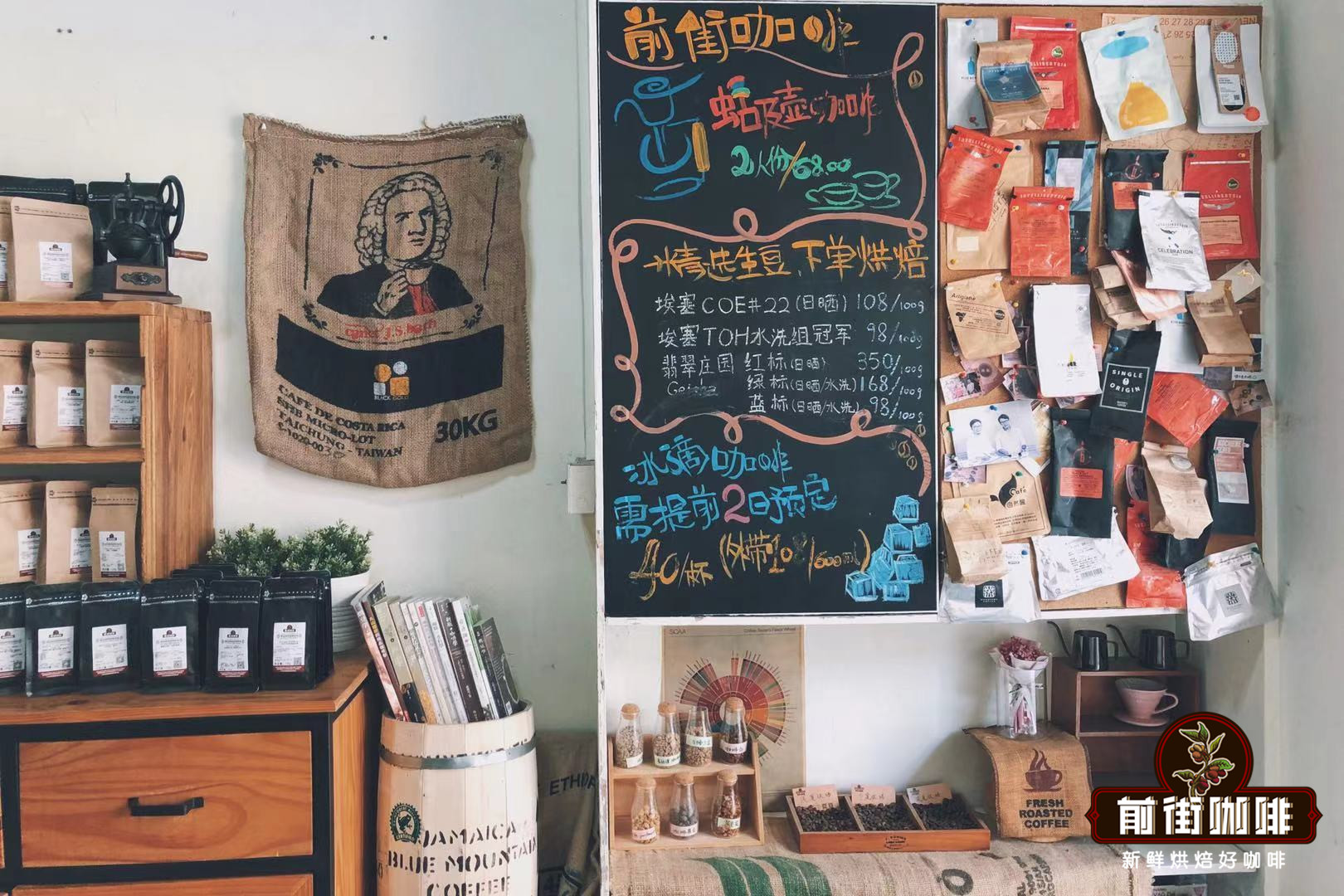
Professional coffee knowledge exchange more coffee bean information please follow the coffee workshop (Wechat official account cafe_style)
There are many coffee producing areas in the world, from carefully cultivating to harvesting full and bright coffee fruits, and then to becoming a cup of delicious coffee has to go through a series of coffee processing processes. One of the most important aspects is the handling of coffee beans. The treatment is not the same everywhere. For example, the treatment of raw coffee beans in Indonesia is wet planing, which is common only in Indonesia and very rare in other places.
Why does Qianjie say that the handling of coffee beans is very important, because in addition to the uncontrollable factors such as topography and climate, the treatment of coffee beans is also an important link in determining the flavor of coffee beans. In front of the street, take the same coffee beans from the Yega Xuefei producing area on the coffee bean list to explain. One of the coffee beans from the same Yega Xuefei producing area uses the ancient sun treatment method, and the other uses water washing treatment. When you use the same method and brewing parameters to brew these two coffee beans, you will find that the taste of the water-washed Yega Xuefei coffee beans is very clean, while the sun-treated coffee beans are more mellow, sweeter and more floral.
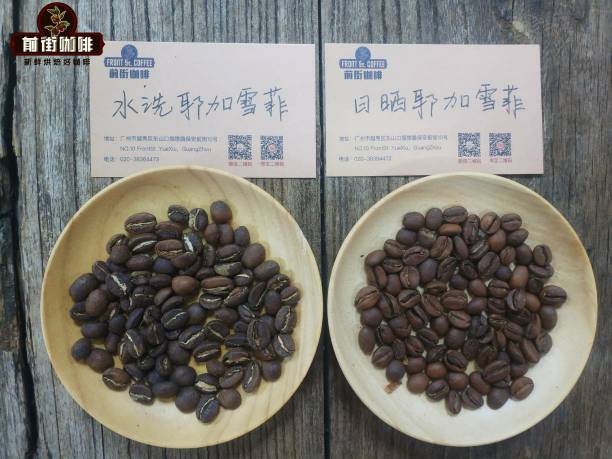
Although washing treatment and sun treatment are one of the three major coffee bean treatment methods, their treatment processes are also very different. Qianjie Coffee will give you a brief introduction to these two treatments. In fact, there is a big difference between water washing treatment and sun treatment. Water resources are widely used in the process of washing treatment, while water is rarely used in the process of sun treatment. Because the washing treatment is to first pour the coffee fruit into a water wash or bucket, use buoyancy to remove immature or other impurities, sawdust and other defects that affect the flavor of the coffee, and then put the selected coffee fruit into a peeling machine to remove the peel and pulp, and then put the raw coffee beans with pectin in water for about 18 hours of fermentation. After decomposing the pectin, after washing the raw coffee beans, you can dry them.
The sun treatment is simple. After removing the defective fruit directly, the peel and pulp of the reserved coffee fruit are directly dried. When the amount of sweat of the coffee fruit is reduced to about 11%, the peel and pulp can be removed and stored. The special treatment of coffee beans in many countries is largely derived from these two treatments to derive the treatment that belongs to their own countries.
For example, Brazil has created its own half-sun method on the basis of sun treatment. After removing the skin and flesh of coffee, it is washed in the pool for an hour. Due to the short time, pectin is still left on the raw coffee beans, and then it is drying. Half-sun treatment is in places where there is a shortage of water resources, but as far as Qianjie knows, this method is also very easy to spoil coffee beans and catch other smells.
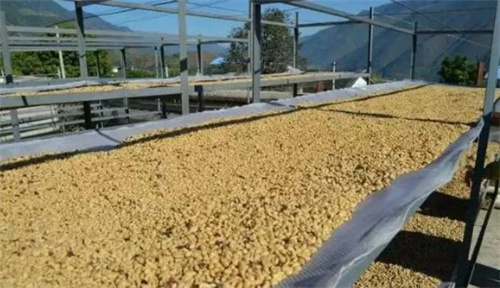
The three major coffee bean treatment methods in addition to washing treatment, sun treatment, there is honey treatment. The honey treatment method is mainly used in Costa Rica, and the general coffee treatment process is very similar to the sun treatment, that is, after the coffee fruit is removed, the pectin is directly retained, without the need for water treatment of the fermentation process. in this way, the process of keeping the pectin directly drying will make the pectin sugar constantly attached to the coffee beans, so the sweetness of the coffee beans is very obvious. A series of musicians from Costa Rica Bach coffee beans on the front street are treated with honey, but this Bahami-treated coffee bean is added with a process, so in fact, the treatment of this Baja coffee bean is called raisin honey treatment. why add the word raisin? Because according to Qianjie, this coffee bean first retains the whole coffee fruit and then directly carries on the drying, then removes the skin and pulp after drying, and then retains the pectin to dry. Because the drying process allows it to slowly control moisture in the natural environment like raisins, it is also called raisin honey treatment.
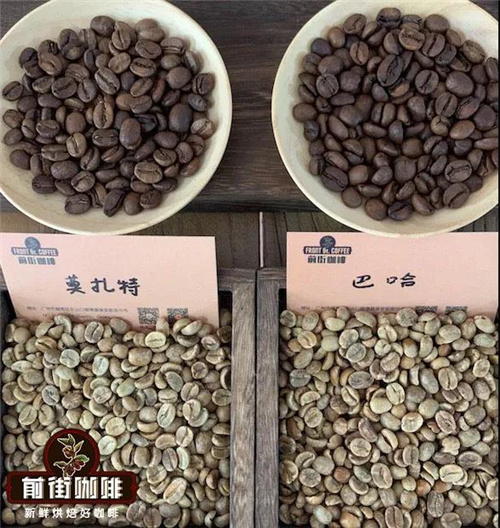
Another special treatment of coffee beans is the Indonesian wet planing method mentioned at the beginning of the front street. Because the environment is relatively humid, coffee beans are easy to get moldy in the drying process if the sun treatment is used. Therefore, after the local Indonesian coffee has removed the peel and pulp of the coffee fruit, it is dried, and at this time the water content of the raw coffee beans is still very high, and then the endocarp is removed by the machine, and the coffee beans without the endocarp are dried again, so that the water content is reduced to about 12-13%, and the treatment is completed.
Because the coffee bean is still in the semi-dry stage when the endocarp is removed, the endocarp is not easy to remove at this stage, and the coffee bean is easily squeezed, so there are often sheep's hoof beans, so it is also referred to as the wet planing method. Therefore, Qianjie also learned that it is this wet planing method that brings unique flavor to Indonesia's Mantenin, but in the process of handling raw beans, if it is handled well, it can produce low mellow and manning flavor. If the coffee beans are not handled well in the wet planing process, Manning coffee is very prone to the smell of mildew.
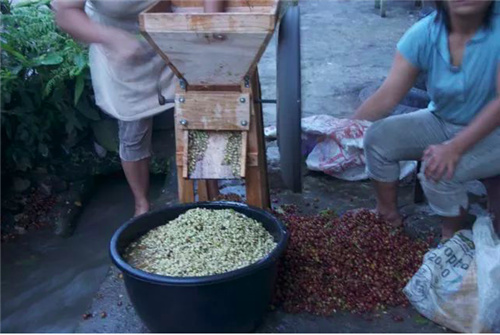
There is another treatment that is now widely used, that is, anaerobic enzyme treatment. One of the coffee beans on the front street shelves is Rose Valley Coffee from Colombia, which is treated by anaerobic fermentation. first, the fresh harvested coffee fruit that has been removed from the defective beans is put directly into a sealed fermentation bucket for low temperature fermentation. the temperature is between 10 and 15 degrees. In an anaerobic environment, the decomposition of pectin sugars slows down because low temperatures inhibit the growth of microorganisms. After more than three days of anaerobic fermentation, the coffee fruit in the bucket is sunburned, and after drying, the peel and pulp are removed and can be entered into the warehouse. Anaerobic fermentation treatment has developed rapidly in the coffee industry in recent years. In the 2018 WBC competition, five of the top six contestants used anaerobic fermentation treatment. Qianjie believes that this also shows the uniqueness of anaerobic fermentation treatment.
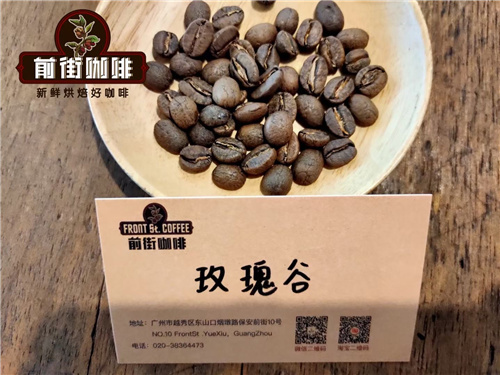
Because the fermentation process of the traditional treatment is relatively difficult to control, because the variables are very large, so the risk will be higher. In the process of anaerobic fermentation, we can not only control the time, temperature, PH and other parameters of these fermentation processes, but also represent the flavor and taste that the traditional treatment methods do not have, thus reducing the risk. However, the process of anaerobic fermentation treatment is not yet mature and needs to be explored constantly.
For more boutique coffee beans, please add private Qianjie coffee on Wechat. WeChat account: kaixinguoguo0925
Important Notice :
前街咖啡 FrontStreet Coffee has moved to new addredd:
FrontStreet Coffee Address: 315,Donghua East Road,GuangZhou
Tel:020 38364473
- Prev

Introduction to Colombian Coffee with silky texture
Colombian coffee has a silky taste. Colombian coffee is equated with high quality and good taste. It is sweet in acid, low in bitterness, rich in nutrition, with a unique sour and mellow taste, and the sour, bitter and sweet flavors of Colombian super coffee match well. Unique fragrance, after drinking, the aroma fills the whole mouth. Put the fragrance in the mouth
- Next

Introduction of washed Sidamo coffee beans with unique aroma
It has a soft sour taste after moderate roasting and a rich aroma after deep roasting. The rich and uniform taste is the most attractive feature of Ethiopian Yega snow coffee. It is known as the best coffee bean in Ethiopia and is the representative of boutique coffee in East Africa. Yega snow coffee is the most unique coffee in the world today, showing a fresh and bright flower and fruit aroma.
Related
- Does Rose Summer choose Blue, Green or Red? Detailed explanation of Rose Summer Coffee plots and Classification in Panamanian Jade Manor
- What is the difference between the origin, producing area, processing plant, cooperative and manor of coffee beans?
- How fine does the espresso powder fit? how to grind the espresso?
- Sca coffee roasting degree color card coffee roasting degree 8 roasting color values what do you mean?
- The practice of lattes: how to make lattes at home
- Introduction to Indonesian Fine Coffee beans-- Java Coffee producing area of Indonesian Arabica Coffee
- How much will the flavor of light and medium roasted rose summer be expressed? What baking level is rose summer suitable for?
- Introduction to the characteristics of washing, sun-drying or wet-planing coffee commonly used in Mantenin, Indonesia
- Price characteristics of Arabica Coffee Bean Starbucks introduction to Manning Coffee Bean Taste producing area Variety Manor
- What is the authentic Yega flavor? What are the flavor characteristics of the really excellent Yejasuffi coffee beans?

